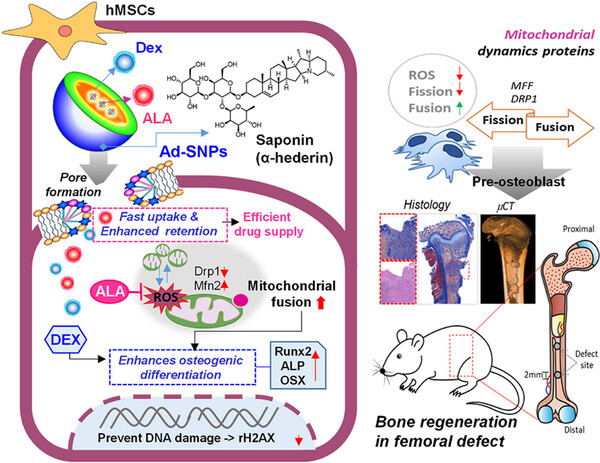Researchers at the Catholic University of Korea College of Medicine have unveiled groundbreaking findings from their work using saponin-based nanoparticles, marking the first successful attempt to employ them in stem cell therapy for more efficient drug delivery and bone regeneration.

The team, led by Professor Koo Hee-beom at Catholic University of Korea's Catholic Photomedicine Research Institute, engineered nanoparticles based on alphza-herein.
The nanoparticles showed the potential to promote osteogenic differentiation of human mesenchymal stem cells (hMSCs) and subsequently enhance bone regeneration.
One of the features of these novel nanoparticles is the rapid cellular absorption and sustained intracellular drug delivery capabilities.
A pivotal aspect of stem cell therapy lies in determining the direction of stem cell differentiation.
As a result, the researchers utilized saponin nanoparticles, referred to as Ad-SNP, infused with dexamethasone (Dex) and alpha-lipoic acid (ALA). This concoction successfully directed the human mesenchymal stem cells to differentiate into osteoblasts, cells responsible for bone formation.
The unique properties of saponin enable Ad-SNP nanoparticles to be rapidly absorbed into stem cells without the need for positive charges, facilitating the formation of cellular pores.
Also, these nanoparticles are capable of providing a longer duration of drug supply within the cytoplasm. When tested on a rat femur bone defect model, the group treated with Ad-SNP-infused hMSCs showcased the quickest bone regeneration and complete recovery.
"This study shows the potential of nanoparticle-facilitated drug delivery within stem cells," Professor Koo said. "We anticipate its broad application in various stem cell therapy domains in the coming years."
The results of the research were published in the November issue of Biomaterials.

